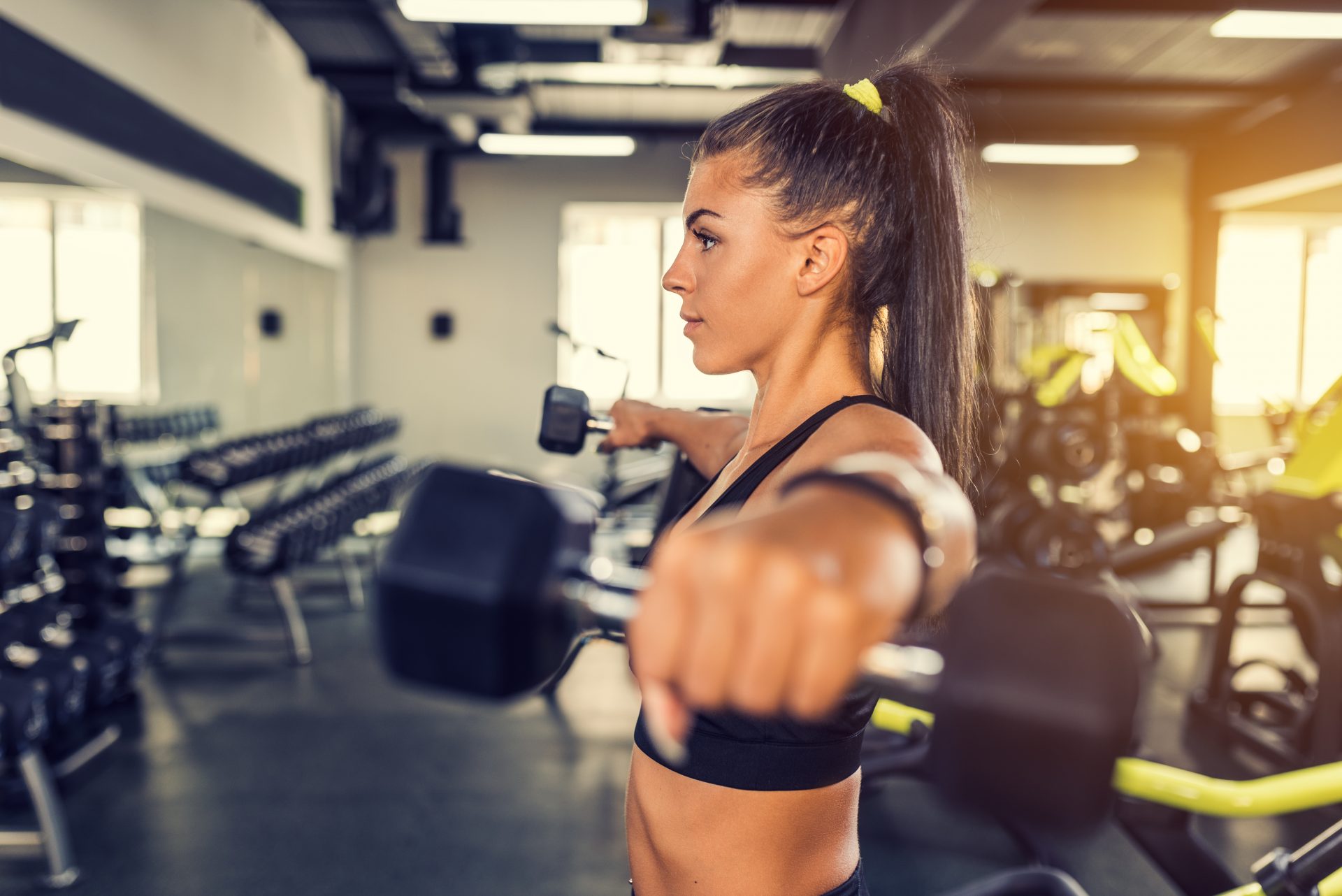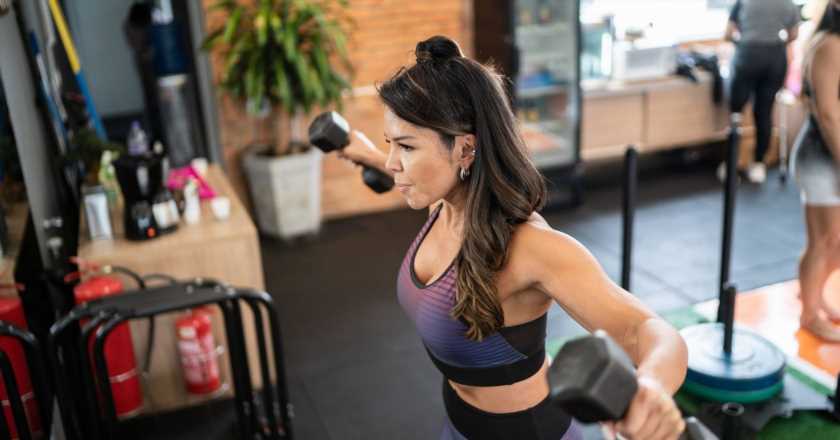This viral video says what we were all thinking about a certain gym exercise
We asked an exercise scientist why progressing with lateral raises is so hard.
You lift weights, you get stronger, you lift more – or at least, that’s how the theory goes. But when fitness influencer Lucy Davis recently posted a video of herself doing lateral raises with text reading, “The exercise you simply can not lift heavier on… ever,” and writing that she had “Been on the same weight for five years… anyone else?” in the caption, we felt seen.
Of all the upper body workouts in the world, progress with lat raises can feel impossible. Week after week, we reach for the same weight and complete the same reps of straight arm lifts. That’s despite seeing gradual progress in other shoulder exercises, such as overhead press or upright rows. Given the comments on Davis’ post, we’re not alone: “I thought it was just me,” one person commented. “Slowly crawling my way up – I’m currently on 5kg after five or six years,” revealed another.
You may also like
Strength training: how to do a lateral raise correctly, according to a fitness trainer
Why is it that lateral raise progress is so hard? Are we just not pushing ourselves enough, or is there something extra-tough about this exercise? According to Dr Bryna Chrismas, sport and exercise scientist at Qatar University, there’s no specific research into a lack of progress on lateral raises. But there are reasons why this exercise can be so much harder than others.
You need a lot of force
“In a lateral raise, when your arms are fully extended, parallel to the ground and at shoulder height, the ‘moment arm’ is at its longest,” Chrismas explains. That’s how far away the joint is from the weight it’s moving – in a lateral raise, the weight is far away from the shoulder. “That means the force going through the shoulder is at its greatest, so you need to exert much greater power to hold the weight up.”

Your shoulder muscles have to work really hard to remain straight, lift high and hold weight. That’s why even a few kilograms is enough to make you quiver. “You’ll notice that if you bend at the elbow, it feels easier. That’s because you are reducing the moment arm by bringing the weights closer to the body,” she says. That might help you get a bigger weight up, but doesn’t necessarily make you stronger.
It’s an isolation exercise
Lateral raises are an isolation exercise, meaning they are predominantly powered by one muscle. In this instance, it’s the deltoid – the shoulder. “Isolation exercises will typically feel harder,” Chrismas says. “That’s because you can’t use multiple muscles to create force. For example, in a squat thrust you can use your lower body to help lift the weight above your head.
You may also like
What are compound exercises and why are they important?
Is one better than the other? “A shoulder press and other compound exercises are arguably more transferable to sports and everyday life, but including lateral raises as an additional exercise to specifically target the deltoids can be useful for overall muscle building,” Chrismas says.
There’s no perfect set or rep range
“There is still the debate over what type of training is best to increase strength. Do you increase volume (the amount of times you lift) or intensity (the amount of weight you lift)? Do you go for mechanical or metabolic stress – meaning increasing the weight or decreasing the rest?” asks Chrismas.
For every study that suggests we should be lifting close to our max for as few reps as possible, there’s another that suggests lighter weights for close to 20 reps is best. “The variability between people – their diet, stress, hormones, genetics and biology makes it hard to come to any robust conclusions about progression and improvement within a specific type of exercise,” adds Chrismas.
To get really existential, asking how we ‘progress’ also means knowing what progress really looks like. “Is it the ability to increase the weight? Or are you trying to increase muscle size or strength? Or are you just wanting the exercise to feel ‘easier’?” Chrismas asks.
You may also like
The kitchen roll analogy proves that fitness progress takes time and patience
The most important thing is that you choose the weight that allows you to complete full reps with proper technique – and that might mean leaving your ego at the gym door.
“Often, people end up choosing too heavy weights for the lateral raise and then end up with a bouncing or swinging action where they have to use their legs and backs to lift the weight. That means they don’t even end up targeting and strengthening the deltoid – which is the point of the exercise – and potentially end up injuring themselves,” says Chrismas. “Just concentrate on good form and, like any other muscle, with the right progression and stimulus you will see improvements. Just don’t expect to be able to lateral raise more than you can bench!”
For more technique tips, sign up to the Strong Women Training Club.
Images: Getty
Source: Read Full Article
